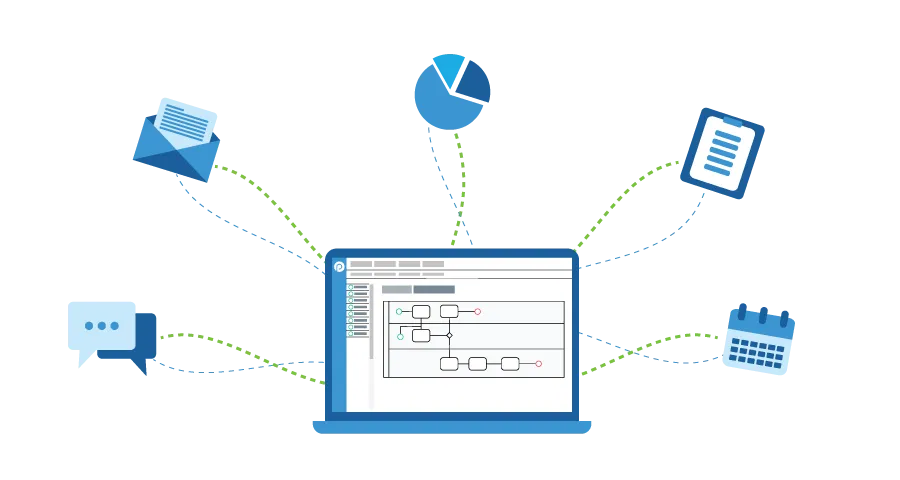The 4 Phases of Business Process Automation
Blog: ProcessMaker Blog
Business process automation has infiltrated nearly every industry as the proliferation of innovative technologies combined with unprecedented operational challenges continue to reshape the workplace. According to McKinsey, “almost every occupation has partial automation potential, as a proportion of its activities could be automated. We estimate that about half of all the activities people are paid to do in the world’s workforce could potentially be automated by adapting currently demonstrated technologies. That amounts to almost $15 trillion in wages.”
To be sure, the age of automation is already well underway in most organizations. According to a 2020 McKinsey Global Survey of business leaders spanning a broad range of industries, approximately 66% report piloting programs to automate at least one business process. Yet success has proved elusive, with just 15% of organizations having set up an automation program and successfully scaled the technologies across multiple processes.
While adopting a single automation technology such as robotic process automation (RPA) can increase efficiency by eliminating manual tasks, it is not enough to successfully scale automation. To deliver end-to-end automation organizations must combine complementary automation technologies to augment business processes, a concept that Gartner calls “hyperautomation”.
Organizations that have been successful with their business process automation efforts are more likely than others to designate automation as a strategic priority, adopt a systematic approach, and work towards achieving hyperautomation. In fact, according to another recent McKinsey study, “Only 5 percent of respondents at successful companies say their deployment methods have been ad hoc, compared with 19 percent of peers not reporting success.”
A comprehensive and effective systematic approach to business process automation consists of 4 phases: analysis, implementation, integration, and maintenance and support.
1. Analysis
Before an organization can implement a business process automation technology into its workflows, it is crucial to gain a full understanding of how a process works as well as the organization’s existing infrastructure and capabilities. Implementing an automation technology into a process without a full appreciation of the impact that it will have on a specific process or other business processes can often result in decreased productivity and efficiency.
Once stakeholders have analyzed the process and the current systems, they can choose the automation technologies that best complement their needs and objectives. Organizations new to business process automation should start with one BPA technology at a time. While it is true that achieving automation at scale requires the use of a multitude of technologies, organizations should implement them incrementally to ensure that they work as intended.
2. Implementation
During the implementation phase, stakeholders set up and customize the business process automation technology selected in phase 1. Stakeholders complete tasks such as creating an in-depth list of functionality, training end-users, and assigning user access. The business process automation technologies undergo extensive testing to ensure systems are performing as intended and are sufficient to satisfy the organization’s goals.
3. Integration
In the integration phase of business process automation, stakeholders integrate the new automation technologies with enterprise systems and third-party solutions. Moreover, data from disparate sources are typically combined and integrated during this step. Integration is largely accomplished through APIs. An intelligent business process management suite (iBPMS) can prove instrumental by simplifying and expediting the integration process.
4. Maintenance and Support
Business process automation is an ongoing and long-term initiative. Organizations must continue to analyze their business processes to identify inefficiencies and bottlenecks. An iBPMS allows organizations to integrate advanced process monitoring technologies such as process discovery and process mining. These technologies monitor business processes in real-time to enable decision-making and prompt corrective action.
Organizations should also continuously update their business process automation solutions and ensure that the entire organization has access to technical support. Widespread user adoption fosters an automation-minded culture and greatly increases the chances of success.
ProcessMaker provides an award-winning low-code iBPMS that helps organizations progress through the 4 phases of business process automation to achieve automation at scale and transform their businesses.
The post The 4 Phases of Business Process Automation appeared first on ProcessMaker.
